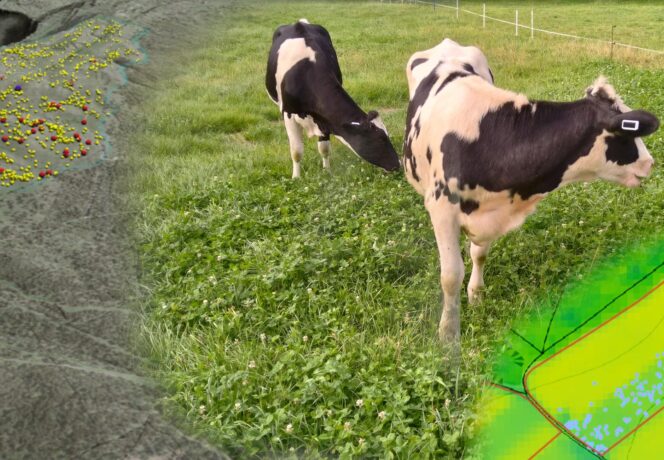
Archive
515 posts

Monitoring systems for indoor housing and home or alpine pastures are gaining in importance owing to their potential for uninterrupted remote monitoring of livestock and for automating administrative tasks. Identitas AG and Agroscope tested the suitability of a sensor ear-tag for cattle for this purpose. The agricultural sector is evolving towards larger farms with bigger…

On-Farm Slaughter – Less Stress, More Animal Welfare
Transport to the slaughterhouse and the time spent in the slaughterhouse are often very stressful for farm animals. A comparative study by the Research Institute of Organic Agriculture FiBL shows that on-farm slaughter can significantly reduce stress for animals.

Sainfoin – an Alternative to Clover/Grass Mixtures When Feeding Green Fodder to Dairy Cows?
An ancient fodder crop that had been largely forgotten, sainfoin is experiencing a revival thanks to its ability to reduce ruminant emissions. Agroscope demonstrated a methane- and ammonia-reducing effect for dairy cows fed with fresh sainfoin.

How to Allocate Greenhouse Gas Emissions from Dairy Production
The dairy sector is urged to reduce negative environmental impacts. But dairy is not only milk: depending on the production system and cow breed, relevant amounts of meat as by-product result. How can emissions thus be allocated to milk and meat?
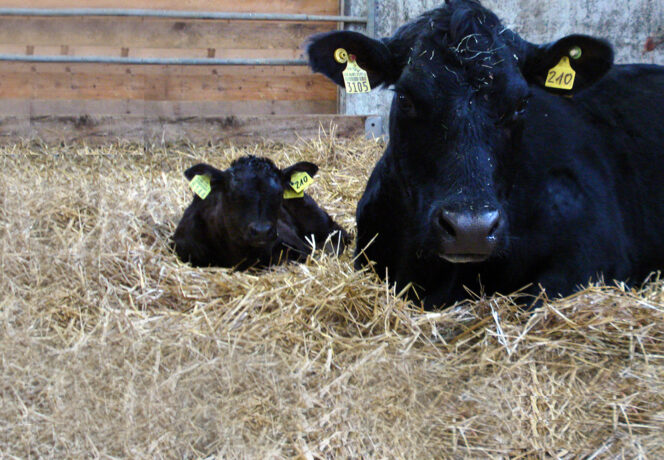
Undersupply of Protein to Suckler Cows: What Are the Implications?
The available forage, climatic conditions and the measures for reducing ammonia emissions can adversely affect protein supplies for suckler cows. What is the impact on the weight and intake of the cows and their calves?

Suckler Cows May Transfer Organic Pollutants to their Offspring: How Does This Process Work?
Persistent organic pollutants may accumulate in the tissues of suckler cows and their calves. Agroscope and Empa studied the processes by which these undesirable substances accumulate as well as the decontamination of previously exposed animals.

Horsekeeping: Influence of Three different Ventilation Systems on Stable Climate
Stable climate has an important impact on the respiratory health of horses. In a study on indoor climate quality, three different ventilation systems were tested.

Mountain Milk Production with Dual-Purpose Cows: Outdated Tradition or Modern Moneyspinner?
Although milk-production oriented (MPO) cow breeds have also become established in the mountain region, farms with the dual-purpose ‘Original Simmental’ breed are proving to be economically viable, with lower costs and higher direct payments making up for lower revenues from milk.

Dairy Cows: Swiss Farms Surveyed on Drying-off Practice
High milk yields before drying-off increase the risk of udder infections during the dry period. An online survey highlights what drying-off methods are currently used and how farmers rate the ‘incomplete milking’ approach for reducing milk yield.

Use of Horses: Performance and Welfare in Working Horses – a Pilot Study
In both sport and alternative agriculture, horses are once again being used as draught animals. Efficient power transmission plays an important role in the wellbeing of draught horses.

The Outdoor Veal Calf Concept Reduces the Use of Antibiotics – Is It Cost-Effective as Well?
A study by Vetsuisse shows that the outdoor veal calf concept reduces antibiotic consumption in calf fattening by 80%. AGRIDEA has examined the economic viability of outdoor veal calf production and concludes that it cannot compete with conventional veal calf fattening.

Feeding Dairy Cows a Protein-Reduced Diet and Reducing Ammonia Emissions
In contrast to pigs, dairy cattle are as yet rarely fed protein-reduced diets. Studies show that there is also potential for protein savings in cattle, and thus for reducing ammonia emissions.

Assessment of Two Boluses for Measuring pH in the Forestomachs of Cows
Forestomach acidosis can impair nutrient utilisation and uptake in dairy cows. Agroscope tested the functioning of two makes of measurement boluses that record pH in the forestomach of cows.

How Do Today’s Dairy Cows Respond to an All-Herbage Ration?
Agroscope investigated the effects on dairy cows of an all-herbage ration compared with a concentrate-supplemented ration. The study shows that an all-herbage ration is possible for suitable dairy cow types.

Pesticides in Beeswax: How Toxic Are They to Honey Bee Larvae?
Pesticides accumulate in beeswax and pose a risk to the development of bee larvae. In an in vitro study, Agroscope evaluated the toxicity of pesticides in beeswax
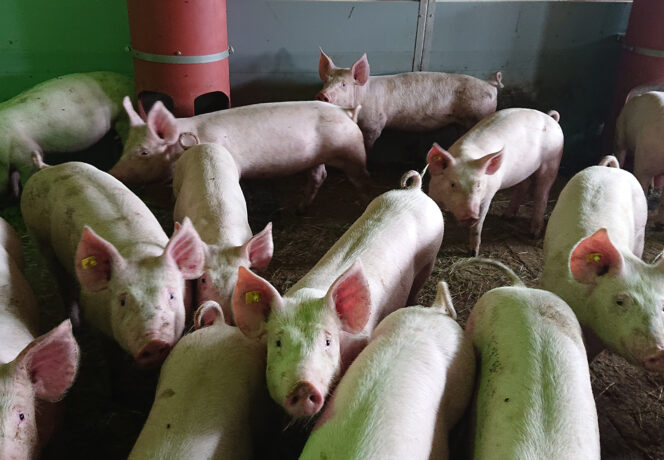
Heat Stress in Fattening Pigs: Which Indicators Can Reveal Reduced Welfare?
Fattening pigs suffer when it is hot. Timely provision of cooling measures increases both animal welfare and success in pig fattening. Researchers at Agroscope examined which indicators reliably indicate heat stress in fattening pigs.

Optimising Protein Feeding with the Help of Milk Urea Content
Excess nitrogen is excreted in the urine and leads to higher ammonia emissions. Nitrogen in the urine of dairy cows can be estimated based on the urea content of their milk. This information can be used to optimise protein feeding.

Should Antibiotic Use Be Reduced through Incentives?
Antibiotic use could be curtailed through incentives that improve animal health. Most farmers are open to direct payments in support of this.
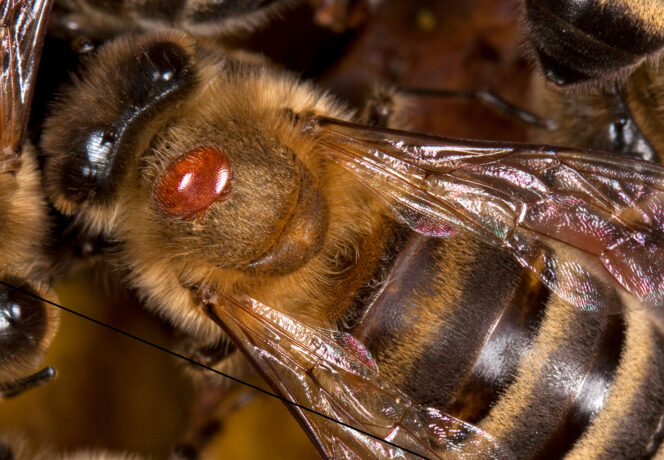
Beekeeping – A Mobile Application for Controlling the Varroa Mite
A simple smartphone could soon become an essential ally for beekeepers in their battle to control the varroa mite. A mobile application for identifying and counting these tiny parasites in the hive – the first of its kind in Switzerland – has just been developed.

Creating a Coordination Centre for Swiss Aquaculture
Swiss aquaculture is enjoying strong growth. However, in order to develop sustainably, the sector needs to be better organised. This study analyses the current situation and proposes a concept for the development of a coordination centre.
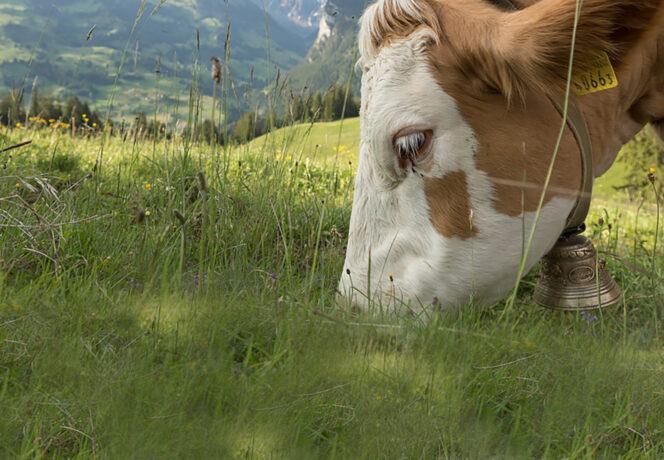
KLIR: A Model for Calculating Greenhouse Gas Emissions from Dairy Farms
Dairy farms are responsible for a significant proportion of greenhouse gases from agriculture. In order to quantify emissions at farm level and identify suitable emissions reduction measures, HAFL researchers developed a model for calculating greenhouse gas emissions from dairy farms.

Bovine Appetite Is Stimulated by Multi-Species Herbage Mixtures
An optimum grassland botanical composition is a key element of the efficient feeding of ruminants. The fattening cattle in this trial clearly preferred a grass/clover/chicory mixture to pure ryegrass.

The RumiWatch System: Automated Feeding and Health Monitoring for Dairy Cows
The RumiWatch system is a smart farming tool, which enables an accurate detection of eating and rumination behaviours performed by dairy cows. The aim of the researchers was to check, if the system that was already established in science for its practical usage.
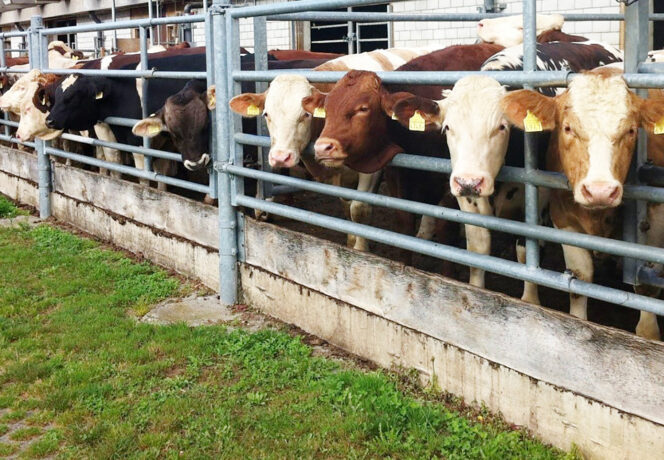
‘Green Book’ Guidelines No Longer Suitable for Estimating Net Energy Requirements for Beef Production
The Swiss ‘Green Book’ feeding recommendations for fattening cattle are no longer suitable for today’s animals and current production conditions. An updating of datasets for system calibration is essential.

Not All Cows Are Alike: Cattle Breed Affects Pasture Vegetation and Diversity
The pastures of low-productive Highland Cattle are particularly species-rich because of their relatively low weight, undemandingness and slowness. This is borne out by Agroscope and AgroVet Strickhof studies.

Livestock Recycle By-Products from the Food Industry
Livestock farming is sometimes criticised for creating competition between feed and food production. However, the animals fulfil an important function by recycling plant by-products and thus closing nutrient cycles.

Equine Health: Dust and Ammonia Emissions from Eight Different Bedding Materials
In equine husbandry, dust and ammonia emmissions have an important impact on respiratory health. Eight different bedding materials were tested for these emissions using a standardized method.
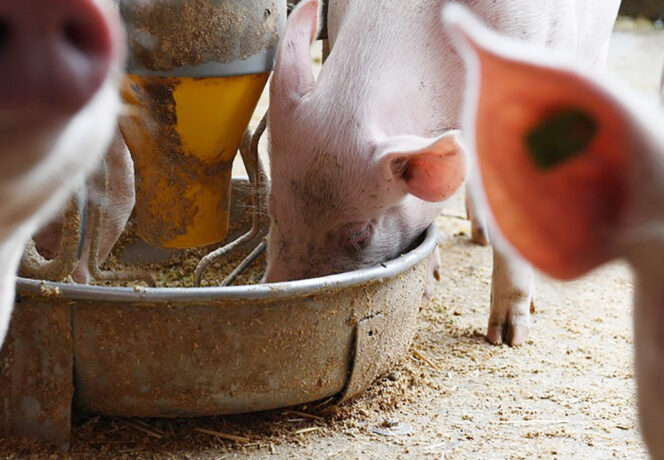
Is 100%-Organic Feeding for Piglets Possible?
100%-organic feeding of piglets has been discussed for a long time. A feeding trial on commercial farms shows that completely organic diets are suitable for piglets, and that their introduction is facilitated by a longer suckling period.

Supplement Improves Growth in Low-Birthweight Piglets
The genetic selection of hyperprolific sows has led to a rise in the number of piglets that are underweight at birth, often runtier and with stunted growth. A study tested the effect of a supplement on their development.

What Does an Individual Cow Consume on the Pasture?
Feed selection on the pasture costs cows time and energy. With the aim of optimised pasture feeding and efficient resource use, the feed selection of Swiss and New Zealand Holstein cows was compared.